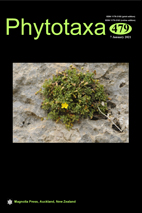Abstract
Pestalotioid fungi commonly occur as pathogens, endophytes or saprobes. In this study, pestalotioid fungi associated with leaf spots and fruit rots were isolated from Alpinia malaccensis, A. galangal, Annona squamosa, Artocarpus heterophyllus, Citrus sp., Garcinia mangostana, Litsea petiolata, a pteridophyte, and Vitis vinifera in Chiang Rai, Thailand. Based on single- and multi-locus phylogenies using internal transcribed spacer, β-tubulin and partial translation elongation factor 1-α gene regions, along with morphological features, the isolates were identified as two new species, Neopestalotiopsis hydeana and Pestalotiopsis hydei. This is the first time a Pestalotiopsis sp. was reported associated with Litsea petiolata and a Neopestalotiopsis sp. recorded from Alpinia, Annona, Artocarpus, Garcinia and a pteridophyte in the world. This fungal group can be considered as an emerging pathogenic group on different hosts in different climatic conditions.

